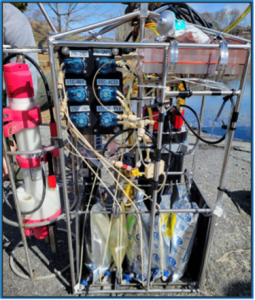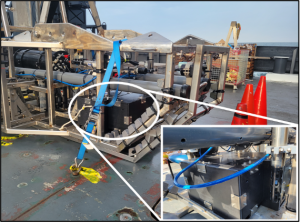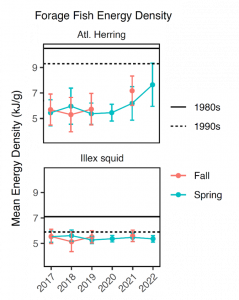CINAR Research Themes
Highlights for Theme II: Ecosystem Research, Observation, and Modeling
Co-Development of a Profiling Dual-Parameter Carbonate Chemistry Sensor to Enhance Monitoring of Ocean Acidification, PI Zhaohui Aleck Wang, WHOI
The Channelized Optical System II (CHANOS II), designed by Woods Hole Oceanographic Institution (WHOI) is deployed on towed vehicles and CTD packages among on-going research surveys to make high-resolution in situ measurements of multiple CO2 system parameters in a productive fishery region, the U.S. Northeast shelf, with the aim of studying the dynamics of the carbonate system and their impacts on commercial fishery species, such as Atlantic Sea Scallop and other commercial shellfish species.
CHANOS II has the capability to measure dissolved inorganic carbon (DIC) – pH pair to efficiently define the seawater carbonate system in studying and monitoring the conditions of seawater acidity and calcium carbonate saturation state, which are important to determine the shell growth and health of shellfish species. So far, the prototype CHANOS II has primarily been deployed for DIC measurements in coastal waters and estuaries for fixed-location time-series and underway applications.

Figure 1: CHANOS II equipped to a custom-built profiling instrument frame.
Figure 2: CHANOS II mounted on the HabCam vehicle for towed deployment on the HabCam Summer 2024 cruise.
Proximate Composition Analysis of Commercially, Ecologically, and Recreationally Important Species, PI Ken Oliveira, SMAST
This project measures the energetic value of mesozooplankton near foraging right whales, which will help with management to conserve the population in the face anthropogenic mortality and habitat threats including offshore wind development. The objective of this investigation is to conduct Proximate Composition Analysis on important mesozooplankton samples from the Northwest Atlantic to establish baseline relationships between prey composition and abundance, preservation methods, total lipid and Energy Density. The baseline regressions may then be used to develop a cost-effective method to monitor/evaluate environmental changes in right whale prey quality over time by analyzing mesozooplankton species composition and abundance.
Figure 3: Forage fish density.


